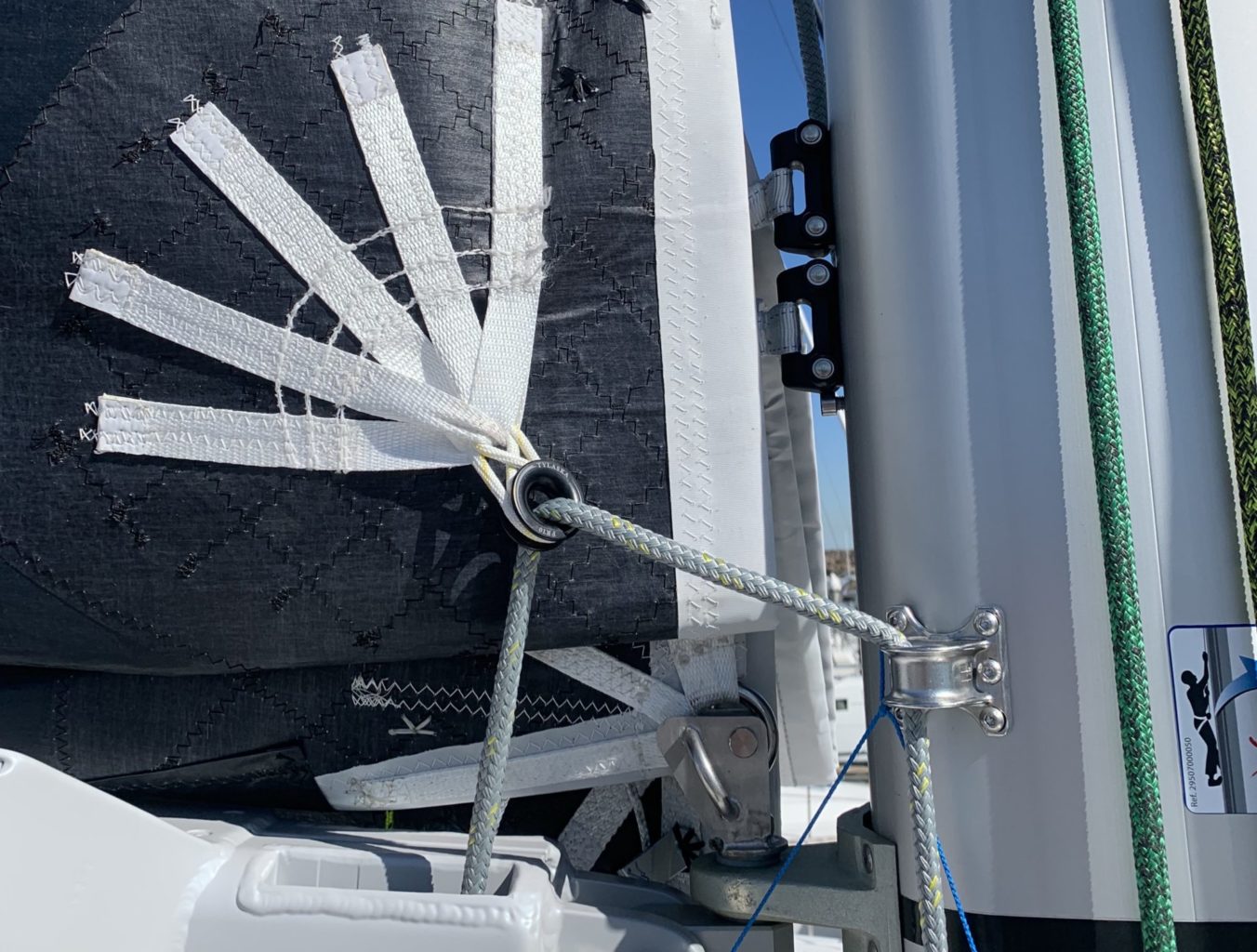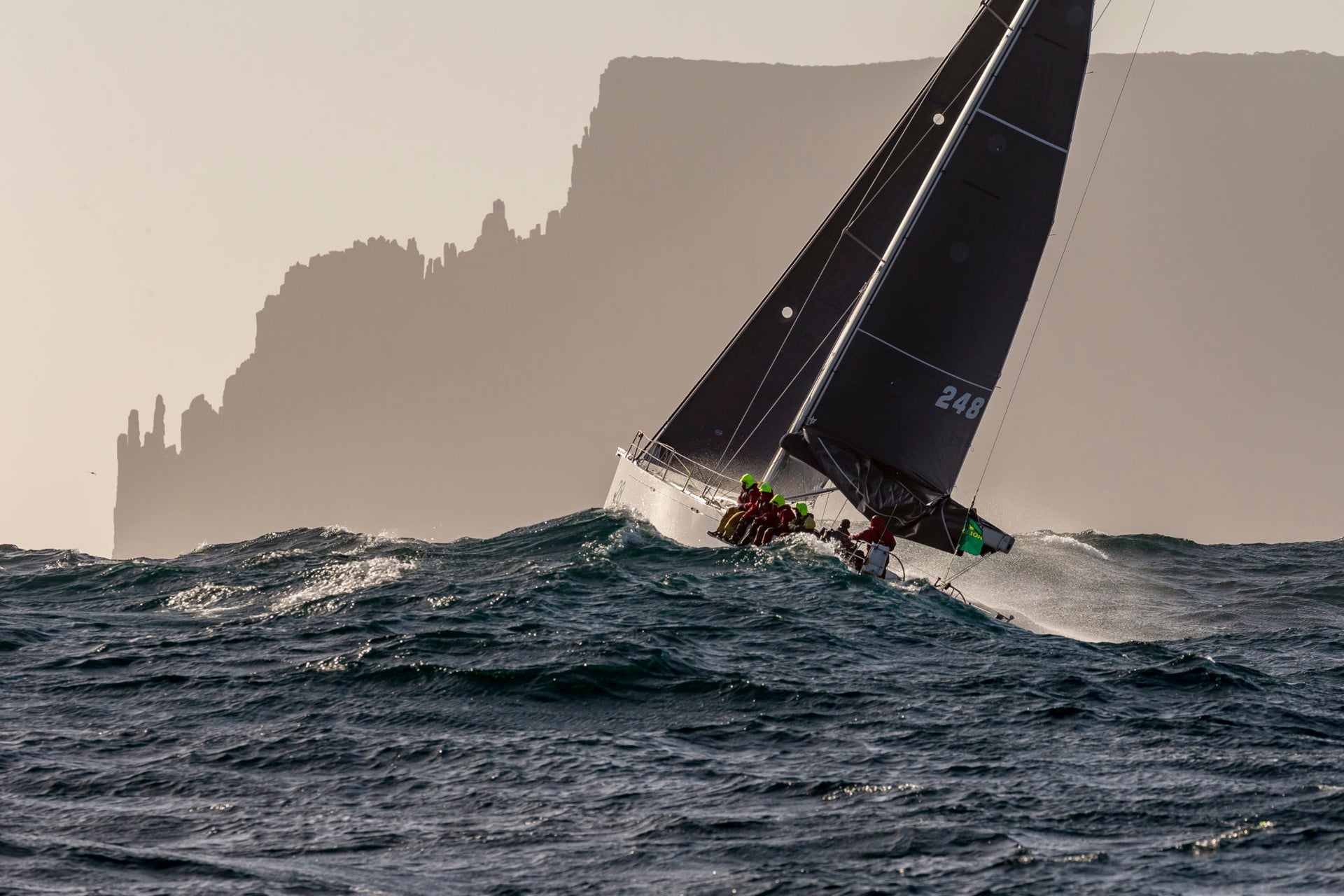SLAB REEFING SYSTEMS & TIPS FOR REEFING
It’s All About Efficiency And Effectiveness

Sailing in big breeze can be fun, exciting, maybe stressful, and sometimes expensive when things go wrong. Shortening sail quickly and easily when the breeze comes on is key to looking after your sails and your crew. In the lead up to your next offshore race, here’s a look at a typical mainsail reefing system and some tips for looking after the mainsail when reefing.
There are many different reefing systems for the mainsail; most are pre-determined by the mast manufacturer, while some are customized by the crew to make reefing faster and safer. Here’s what to look out for when reefing to ensure you are looking after the sail, mast, boom, and fittings.
Practice first
Reefing needs to be both safe for the crew and fast, because the more time the sail spends flogging the more likely it will be damaged. The best way to achieve reefing efficiency is to practice, practice, practice, both at the dock (to get all the lines, knots, and clips positioned correctly) and on the water. Take the time with the whole crew to go through the process in moderate conditions. Check everything under load, and mark the main halyard so you know how much you’ll need to drop the sail to get the luff on the reef horn or clip. Measure out the reef ties for tying up the reefed section of the mainsail, and check the mainsail has the spreader chafe dots fitted in the correct place. It’s great for the whole crew to do this together, as the next time will be under pressure and no doubt dark and windy! You might even take photos as a reminder of what setup worked best.
Slab reefing
There are many different systems for reefing the mainsail these days, but the most common system is slab reefing. This is the way that 90% of the fleet will reef their mainsail, and when done correctly it is the simplest and most reliable system. First the luff’s reef point is secured, and then the clew’s reef point is pulled toward the outboard end of the boom until the foot of the sail is nice and flat. Below is a description of each step that will work on most boats; if you are not 100% sure of your setup, ask your sailmaker or rigger for help.
Secure the luff
The forward end of a slab reefing system consists of either reefing horns, a cunningham hook, or a luff-line on the boom. The sail will have fittings that must match the boat so they will hold the luff end secure: web loops, floppy rings, or press rings. Whatever system you have, it must be easy and fast to secure the reef point on the luff. The luff must be held both down and forward, to keep the load off the boltrope or slide; if the tack drifts too far aft, the sail can pull out of the track or tear.
This photo shows the luff end of a reefed offshore mainsail. A cunningham is fed through the mast eyelet and is pulled through the gooseneck to secure the reefed tack. Note on some boats, the boltrope will be all in line with the rig and not angling backwards, loading up the feeder. If the cunningham hook/eyelet is not held forward, the slide above the reef point will take all the load. Eventually the slide will break or the sail will tear.

Tension the outboard end
The outboard end of the first reef is generally controlled by a reef line run through either a pressed ring or a webbing loop on the leech. The reef line itself is either secured by a ‘running bowline’ or ‘buntline hitch’ tied around the boom. It’s ok to use a knot on an alloy boom. On a carbon boom, a ‘reef nappy’ is recommended to prevent point loading.
The position of both the knot and the reef nappy relative to where the clew will end up is very important. Try to end up with the line around the boom about 50mm behind the ring in the sail when it is fully tensioned, which will help keep the sail close to the boom but still allow it to be flattened out properly. Note also the second reef line, which is ready for the next reef but ttailed up so it won’t get caught on anything.

Reefing step by step
The process itself should be performed in a specific order and overseen by the mainsheet trimmer. Once the call is made to reef, here are the basic steps:
- Flake out main halyard to ensure no twists or knots will slow the drop and increase flogging time. Load halyard on winch.
- Load up the outboard reef line, and check all is clear on the leech.
- Ease vang off completely and ease outhaul off a few inches.
- Mainsheet trimmer eases the mainsheet and calls, “Drop Halyard”.
- Mast pulls down the luff and secures the sail onto the horn or cunningham clip.
- Mast ensures the cunningham is max on, calls “Made”, and signals to the pit to hoist the main halyard. Watches bolt rope feed into the rig in case of snags.
- Pit hoists the halyard until the luff is firm, then signals for the pit to grind in the outboard reef line.
- Mainsheet trimmer watches the reef line, calls how much is left to grind in, and makes sure the reef line is not crushing the sail. The sail can be pushed out to leeward or pulled over to windward of the boom, depending on how the reef line is run and what tack you are on. Remember we are bringing the boom up to the sail, not sheeting on the sail with the reef line, so make sure mainsheet and vang are eased.
- Mainsheet trimmer calls “Made” on the reef line and sheets on the sail.
- Mast and bow secure the reefed section of the sail, tying only around the sail and not around the boom. (If the reef line breaks, the sail will tear at the next reef tie if it’s secured around the boom.)
- Mainsheet checks leech line tension. Spilts in the leech are where the tears usually start during reefing.
While reefing, good clear communication is very important, so consider removing jacket hoods. If it’s dark, make sure the mainsheet trimmer has a torch to watch the part of the sail being winched, to ensure there is no tangle or over-tensioning.
As with anything in sailing, practice and good equipment are key to success, so get out there, pull in a reef, and check everything is in order.
Remember: to finish first, first you have to finish. So look after your sails!




























